Menu
- News
- IFAA
- Committees and Programmes
- Societies
- Plexus
- IFAA Congresses
- Recommendations
- Archive of relevant IFAA documents
close
"To develop a complete mind: Study the science of art. Study the art of science. Develop your senses - learn how to see. Realize that everything connects to everything else"
Leonardo da Vinci (1452-1519)
2021 Anatomy Festival: Anatomy Education: Inclusive, Diverse, Accessible
Opening Symposium on World Anatomy Day, 15 October 2021
The presentations at The Anatomy Education Festival: Inclusive, Diverse, Accessible can be accessed via the links below:
Closing Symposium on 15 December 2021- ***coming soon***
2020 World Anatomy Day, 1st IFAA Virtual Symposium
Opening Symposium on World Anatomy Day, 15 October 2021
1. Anthropology Bone Repository: images of bone and teeth
by David Bryson, University of Derby, UK
This downloadable repository of osteological images includes:
2. Gender Roots: An animation explaining terms used to describe gender and sex
submitted by Sarah Gluschitz, Centre of Biomedical Visualization, St George’s University, Grenada
Gender Roots aims to increase awareness and understanding of human diversity within the Caribbean region and across the globe. Roots in general are amorphic and asexual in their nature and thus offer a blank canvas for teasing out and exploring the often overlapping concepts of Anatomical Sex, Gender Identity, Gender Expression and Attraction. The animation uses passive and inclusive language to invite people to open themselves up to see the fullness of our collective humanity.
1. Addressing Bias in Medical Education through Inclusive Anatomical Representation
By Martha Ellen Katz et al., Harvard University, USA
A pioneering pilot project to replace the predominant anatomical representation of the human body as young, lean, white, and male by collecting and generating anatomical images of all human forms, including those who have been systematically excluded from medical discourse. The pilot will develop into an open-source, multimodal platform that fosters an accessible and collaborative model of medical education.
2. Pandemic Pedagogy: Transition to a virtual journal club in Anatomy
By Kerri Keet1, Janince Correia1, Rudolph Venter1,2, Karin Baatjes1,3, Quenton Wessels4: 1Division of Clinical Anatomy, Faculty of Medicine and Health Sciences, Stellenbosch University, Divisions of 3Surgery and 2Orthopaedic Surgery, Department of Surgical Sciences, Tygerberg Hospital, South Africa, 4Department of Anatomy, School of Medicine, University of Namibia
A virtual journal club for Clinical Anatomy was implemented in response to the COVID-19 pandemic, with synchronous meetings on Microsoft Teams, followed by asynchronous discussion on WhatsApp. Students’ perceptions were sought via open-ended questionnaires (2020 cohort) and semi-structured interviews (2021 cohort). Responses were analysed by Braun and Clarke’s thematic analysis. The themes that developed were virtual format and content, with sub-themes of knowledge, time, challenges, and positive experience; and community of practice with sub-themes of social interaction and mentoring. The goals of journal club are to improve scientific writing and critical appraisal skills. The findings reveal that the educational benefits of journal club were retained in an online environment, with students adapting rapidly to the new format and forming a community of practice.
3. Beyond the Sex Binary: Toward the Inclusive Anatomical Sciences Education
by Goran Štrkalj and Nalini Pather; Department of Anatomy, Medicine & Health, UNSW Sydney
This paper has been published in Anatomical Sciences Education:
Štrkalj, G. and Pather, N. (2021), Beyond the Sex Binary: Toward the Inclusive Anatomical Sciences Education. Anat. Sci. Educ., 14: 513-518. https://doi.org/10.1002/ase.2002
Developments in biology and genetics in recent decades have caused significant shifts in the understanding and conceptualization of human biological variation. Humans vary biologically in different ways, including individually, due to age, ancestry, and sex. An understanding of the complexities of all levels of biological variation is necessary for efficient health care delivery. Important steps in teaching medical students about human variation could be carried out in anatomy classes, and thus, it is important that anatomical education absorbs new developments in how biological variation is comprehended. Consequently, the binary division in male and female sex has been called into question and a more fluid understanding of sex has been proposed. Some of the major textbooks teach anatomy, particularly of the urogenital system, as a male-female binary. Anatomical sciences curricula need to adopt a more current approach to sex including the introduction of the category of “intersex”/“differences in sexual development” and present sex as a continuum rather than two sharply divided sets of characteristics.
4. Cervical Cancer in the Caribbean Region
By Claudia Cárceles Román, St. George's University, Grenada, West Indies
Cervical cancer is among the top three most common cancers amongst Caribbean women. To help address this issue, an animation was created in collaboration with the Women in Medicine Association and the Center for BioMedical Visualization at St. George’s University. The educational resource was created to provide sustainable and accessible material as an alternative for in-person outreach efforts, conducted before the pandemic. Aspects like narration by a Caribbean national, along with illustrations reflecting the Grenadian culture, helped the audience to better relate with the information being viewed. Creating relevant digital materials is another step of advancement, into modernizing the current health-promotion strategies and making it accessible through multi-channel campaigns, carried out by the WIM. The initiative was proven to be a successful tool capable of targeting isolated audiences in remote areas, who would otherwise be limited to accessing this important information.
5. Diversity in the Museum of Human Anatomy “Filippo Civinini” at the University of Pisa
By Gianfranco Natale, University of Pisa, Italy
The Museum of Human Anatomy “Filippo Civinini” of the University of Pisa (Italy) offers different examples concerning the attention paid to diversity in anatomical research. Two cases are illustrated. In spite of the tradition of male bodies usually dissected in anatomical research, the first case refers to the attention paid to female corpses by three famous anatomists who were in Pisa during the Renaissance period (Vesalius, Colombo and Falloppio). The second case concerns the unethical use in the anatomy of human bodies from genocide programs, such as those waged in the German south west Africa and during the Nazi period.
6. Using a pre-work traffic light system to prepare students for active learning
Rachel Door, Keele University, United Kingdom
Anatomy education involves learning a huge array of complex terms and 3D relationships. As such, the successful anatomy program involves an active learning environment with the use of cadaveric material and or models. However, if this active learning environment is the first-time students are exposed to the new terminology this can be overwhelming and ultimately result in disengagement from the content. We introduced a traffic light system of pre-work to focus students’ preparation prior to the active anatomy session. Material was categorised into red mandatory content, amber recommended resources, and green supplementary material. Both staff and students have benefitted from this shift in focus that allows students to apply this pre-acquired theoretical knowledge in the active learning environment of the dissection room.

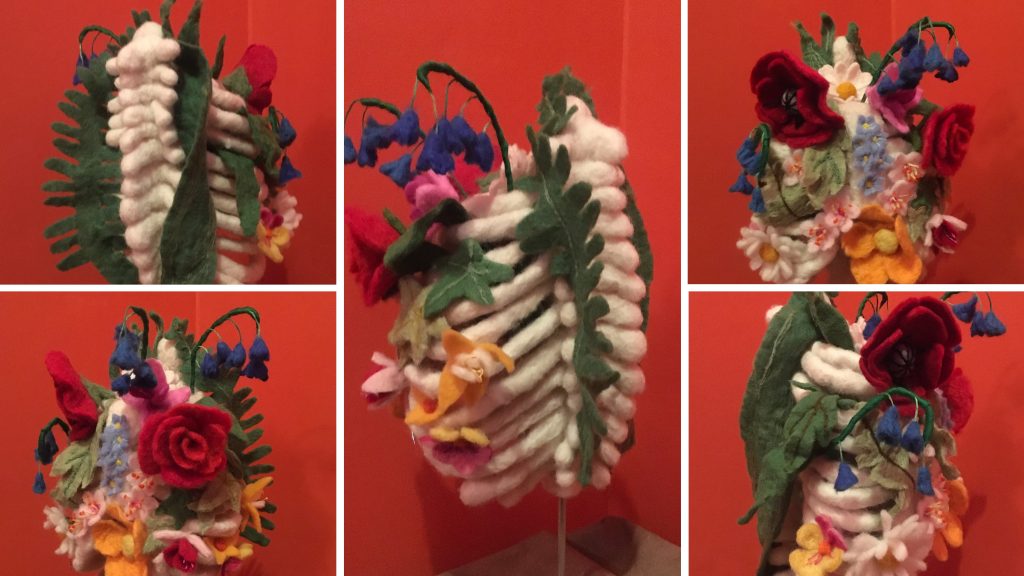

According to the laws of nature, peace completely dominated the earth until humans decided to destroy the borders of nature for satisfying their personal needs. By that, nature showed its wrath through drought, earthquake, and deadly viruses. Mother Nature, similar to Noah’s Ark, rescues a few of the creatures from the earth to the hand of god to protect them from catastrophes. Her baby, in the other hand, was supposed to bring serenity to the earth while everything lay in ruin due to man's carelessness. The human body of a mother depicts Mother of Nature, I came up with idea to show people how they can lead to the destruction of nature.The little details of the lungs show that the upper part, far from human, is full of lively flowers, in contrast to the lower part. Mother Nature also tries to save the world but she herself has also started to decay little by little.
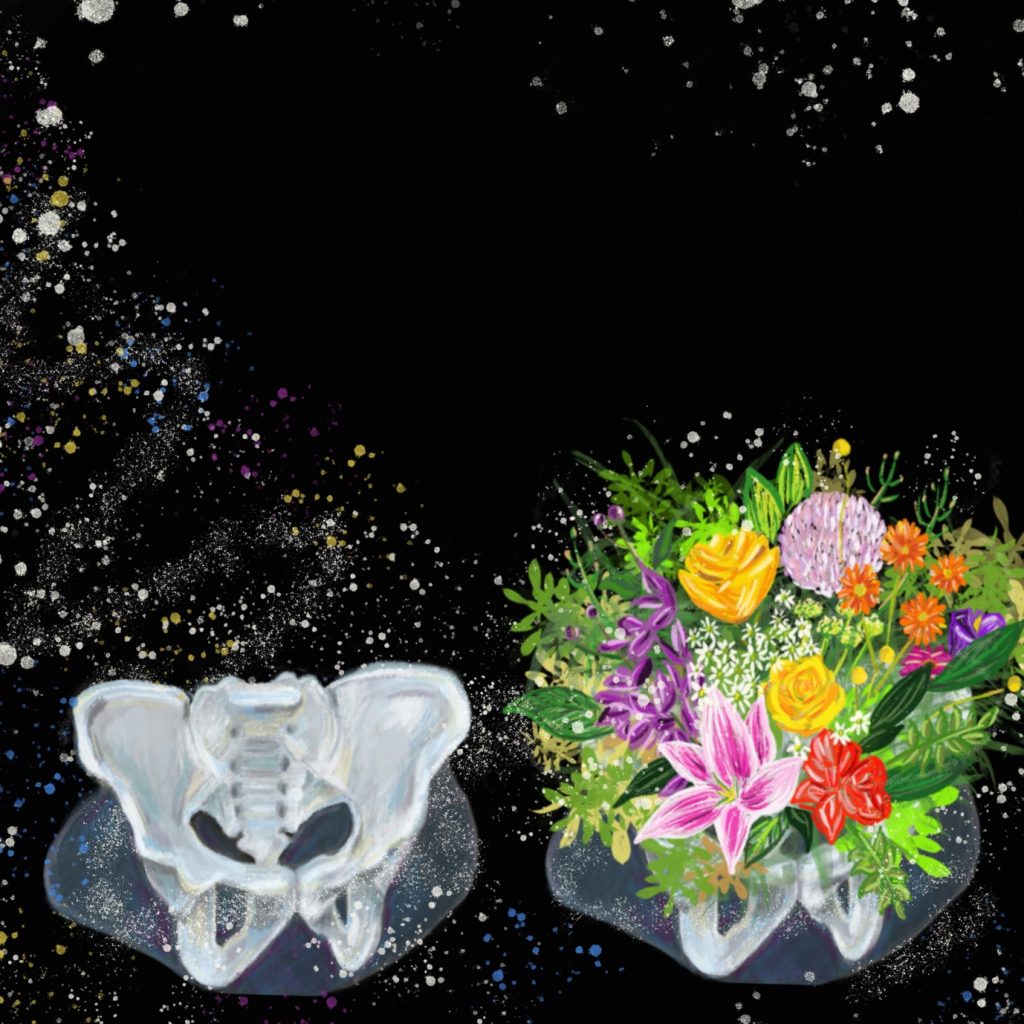
I have created a digital artwork to illustrate the diversity and inclusion in anatomy education. Pelvis is an important anatomical structure and framework, designed for weight-bearing and maintaining balance. It represents connection, stability, and strength. Through the wonders of educators, it is possible to bring to life, like the blooming vibrance of nature, the diversity, inclusion, and accessibility in today’s anatomy education. Personally, these wonders are almost magical but real, just unfolding but perpetual and promising.
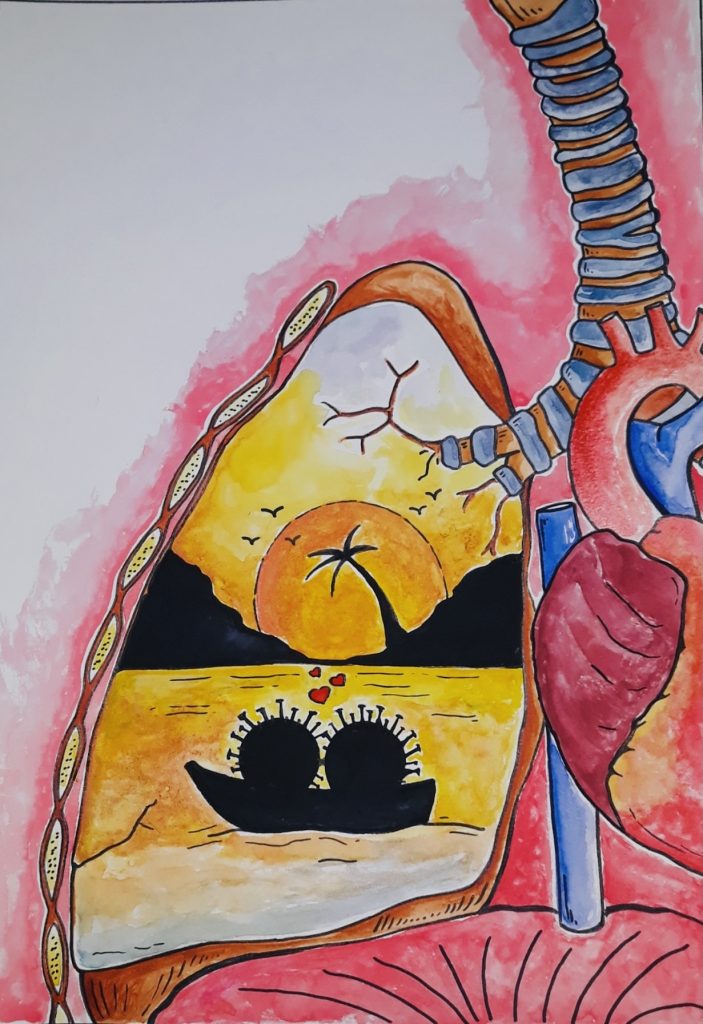
Since an early age, I was keen on art and medicine. In my opinion, medicine is an art! That’s why I chose my path very early in life and decided to be a doctor. Currently I am studying in Kharkiv National Medical University and am in 5th year. I am as passionate about anatomy now was in my 1st year of education. All that is due to my teacher Dr. Olga Avilova who has fostered my interest and love in the subject and scientific research. I assisted in her PhD investigations, and it was the greatest experience in years as a student. With my fusion anatomy drawing, I want to deliver a message to the world: Life is too short to fill your lungs with COVID 19 and make it even shorter. The massive invisible onslaught of the mysterious pneumonia remains an unprecedented challenge to human existence. Time is running out! Save the world before the times up.
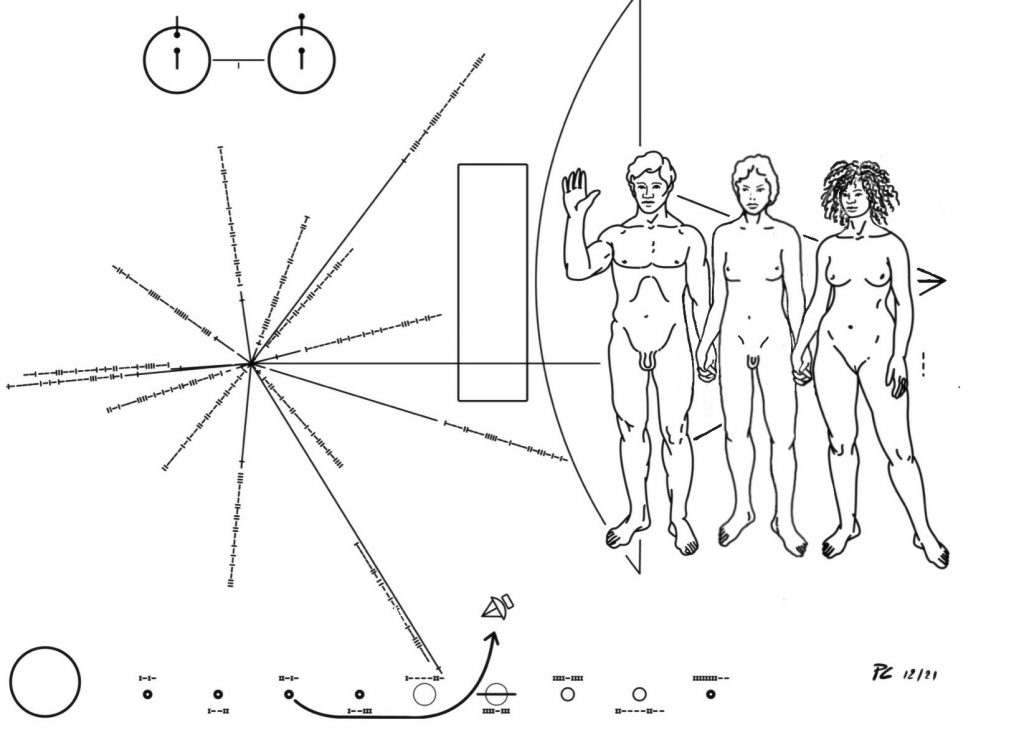
This is Us” is based on the famous Pioneer plate, a gold-anodized aluminium plate placed on the Pioneer 10 and Pioneer 11 space crafts launched in 1972 and 1973. The plate was designed by Carl Sagan to show what we, human beings look like and where our planet is for any intelligent civilization out there. The probe has now moved in space beyond the solar system and will never come back. I have just added a third person and modified a few things.
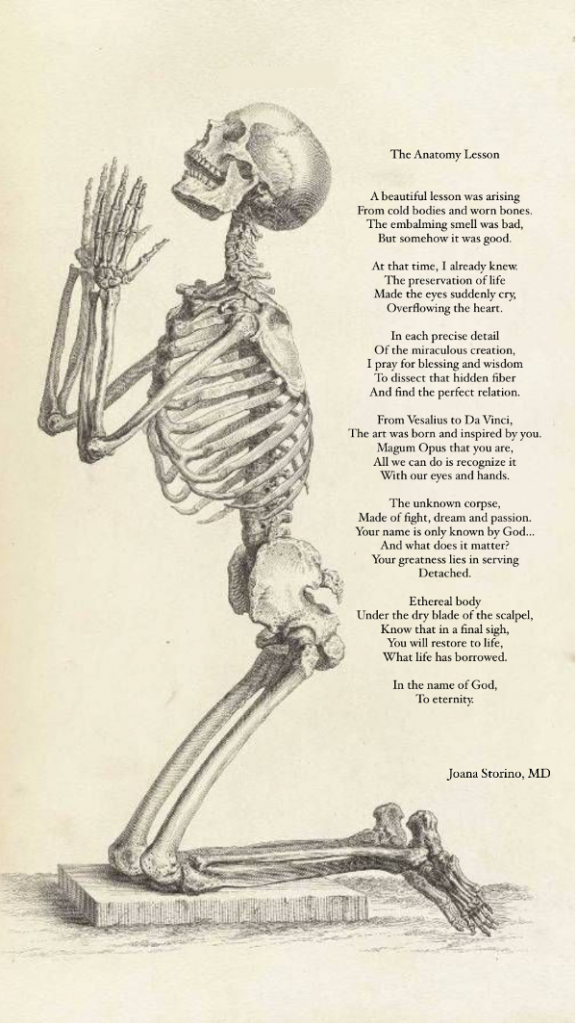
The Anatomy Lesson
By Joana Storino, MD
This poem is a tribute to corpses by an anatomy teacher and poetry lover
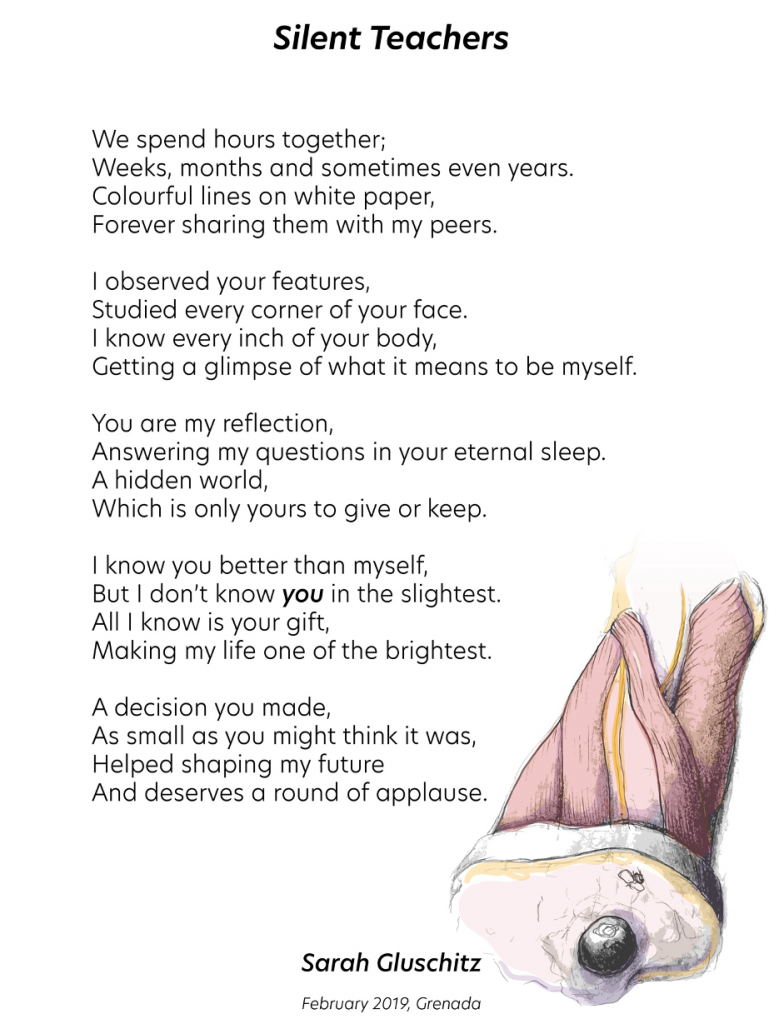
Silent Teachers
By Sarah Gluschitz
St. George's University, Grenada
This poem was written as a token of appreciation for the donors and donor families of anatomical institutes.
Japanese Hiku Poem for The Facial Artery
Piyakarn Boontem, Kanazawa University, Japan
Main facial artery
There are many small branches
Those supply our face
First, Inferior labial arteries
These tiny branches supply lower lip
Also, the labial glands
Next, superior labial branches
Provide nutrients for superior lip
Each tips rise to lower nose
Last is angular branches
located to the angle of our eyes
Right! Supply inferior eyelids
Web design and maintenance by michaelnissen IT